Nestled in the Great Plains of the Midwestern United States, Nebraska is a state defined by its expansive skies and rolling prairies.
Known for its agricultural prowess, pioneer history, and the Oregon Trail, Nebraska’s reputation includes being a hub for college football, a leader in beef production, and the backdrop for the Homestead Act, which shaped the American West.
Nebraska (NE) on the US Map
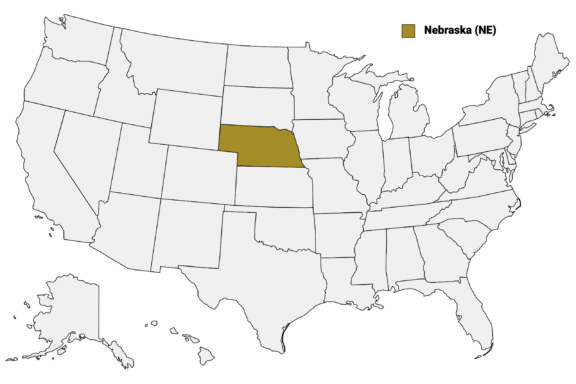
Nebraska is composed of 93 counties, each playing its own role in forming the state’s identity.
From the bustling urban center of Omaha in Douglas County to the scenic, sprawling sandhills of Cherry County, this post will delve into the most notable counties in Nebraska. We’ll examine what makes the state’s counties unique as well as provide a Nebraska Counties Map.
Map of Nebraska Counties
Below is a map of the 93 counties of Nebraska (you can click on the map to enlarge it and to see the major city in each county).
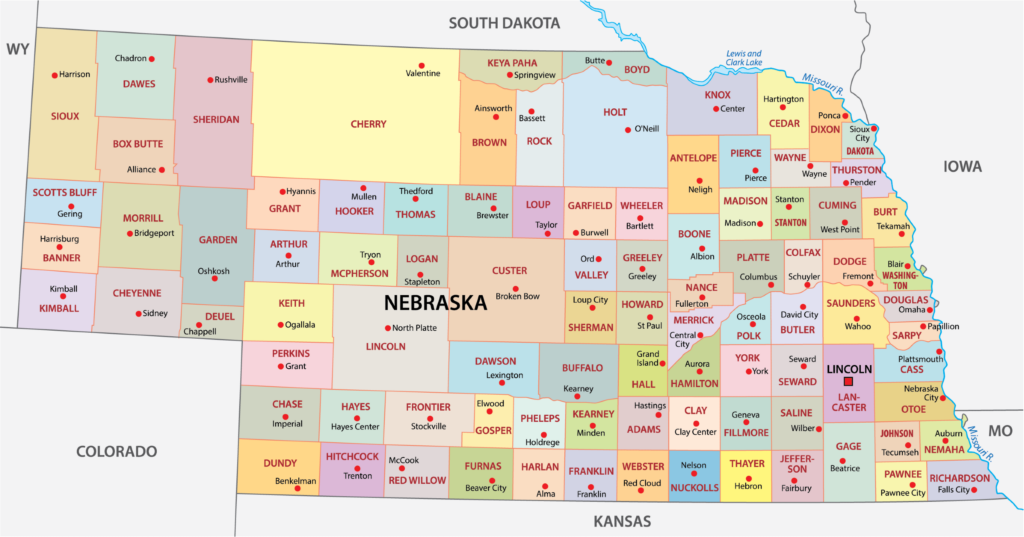
Interactive Map of Nebraska Counties
Click on any of the counties on the map to see its population, economic data, time zone, and zip code (the data will appear below the map). Data is sourced from the US Census 2021.
List of the Counties of Nebraska:
| County | Population | Per sq. km | Largest City |
|---|---|---|---|
| Adams County | 31,284 | 21.44 | Hastings |
| Antelope County | 6,310 | 2.84 | Neligh |
| Arthur County | 472 | 0.25 | Arthur |
| Banner County | 605 | 0.31 | Harrisburg |
| Blaine County | 346 | 0.19 | Dunning |
| Boone County | 5,413 | 3.04 | Albion |
| Box Butte County | 10,821 | 3.89 | Alliance |
| Boyd County | 1,812 | 1.3 | Butte |
| Brown County | 2,752 | 0.87 | Ainsworth |
| Buffalo County | 49,840 | 19.87 | Kearney |
| Burt County | 6,705 | 5.27 | Tekamah |
| Butler County | 8,354 | 5.51 | David City |
| Cass County | 26,546 | 18.39 | Plattsmouth |
| Cedar County | 8,401 | 4.38 | Hartington |
| Chase County | 3,694 | 1.59 | Imperial |
| Cherry County | 5,505 | 0.36 | Valentine |
| Cheyenne County | 9,575 | 3.09 | Sidney |
| Clay County | 6,104 | 4.12 | Sutton |
| Colfax County | 10,608 | 9.95 | Schuyler |
| Cuming County | 9,035 | 6.11 | West Point |
| Custer County | 10,625 | 1.59 | Broken Bow |
| Dakota County | 21,284 | 31.1 | South Sioux City |
| Dawes County | 8,383 | 2.32 | Chadron |
| Dawson County | 24,031 | 9.16 | Lexington |
| Deuel County | 1,878 | 1.65 | Chappell |
| Dixon County | 5,632 | 4.57 | Wakefield |
| Dodge County | 37,249 | 27.18 | Fremont |
| Douglas County | 578,771 | 684.62 | Omaha |
| Dundy County | 1,900 | 0.8 | Benkelman |
| Fillmore County | 5,561 | 3.73 | Geneva |
| Franklin County | 2,914 | 1.95 | Franklin |
| Frontier County | 2,512 | 1 | Curtis |
| Furnas County | 4,655 | 2.5 | Cambridge |
| Gage County | 21,706 | 9.84 | Beatrice |
| Garden County | 1,726 | 0.39 | Oshkosh |
| Garfield County | 1,889 | 1.28 | Burwell |
| Gosper County | 1,811 | 1.53 | Elwood |
| Grant County | 718 | 0.36 | Hyannis |
| Greeley County | 2,219 | 1.5 | Greeley Center |
| Hall County | 62,616 | 44.25 | Grand Island |
| Hamilton County | 9,376 | 6.68 | Aurora |
| Harlan County | 3,216 | 2.24 | Alma |
| Hayes County | 891 | 0.48 | Palisade |
| Hitchcock County | 2,630 | 1.43 | Trenton |
| Holt County | 10,175 | 1.63 | O’Neill |
| Hooker County | 714 | 0.38 | Mullen |
| Howard County | 6,461 | 4.38 | St. Paul |
| Jefferson County | 7,213 | 4.88 | Fairbury |
| Johnson County | 5,298 | 5.44 | Tecumseh |
| Kearney County | 6,639 | 4.97 | Minden |
| Keith County | 8,312 | 3.02 | Ogallala |
| Keya Paha County | 946 | 0.47 | Springview |
| Kimball County | 3,583 | 1.45 | Kimball |
| Knox County | 8,434 | 2.94 | Creighton |
| Lancaster County | 320,301 | 147.65 | Lincoln |
| Lincoln County | 34,906 | 5.26 | North Platte |
| Logan County | 865 | 0.59 | Stapleton |
| Loup County | 665 | 0.46 | Taylor |
| Madison County | 35,553 | 23.97 | Norfolk |
| McPherson County | 475 | 0.21 | Tryon |
| Merrick County | 7,687 | 6.09 | Central City |
| Morrill County | 4,595 | 1.25 | Bridgeport |
| Nance County | 3,389 | 2.96 | Fullerton |
| Nemaha County | 7,025 | 6.66 | Auburn |
| Nuckolls County | 4,125 | 2.77 | Superior |
| Otoe County | 15,916 | 9.98 | Nebraska City |
| Pawnee County | 2,564 | 2.3 | Pawnee City |
| Perkins County | 2,865 | 1.25 | Grant |
| Phelps County | 8,972 | 6.42 | Holdrege |
| Pierce County | 7,266 | 4.89 | Pierce |
| Platte County | 34,123 | 19.55 | Columbus |
| Polk County | 5,223 | 4.6 | Stromsburg |
| Red Willow County | 10,724 | 5.77 | McCook |
| Richardson County | 7,893 | 5.52 | Falls City |
| Rock County | 1,321 | 0.51 | Bassett |
| Saline County | 14,395 | 9.68 | Crete |
| Sarpy County | 188,464 | 305.61 | Bellevue |
| Saunders County | 22,008 | 11.35 | Wahoo |
| Scotts Bluff County | 36,229 | 18.91 | Scottsbluff |
| Seward County | 17,605 | 11.9 | Seward |
| Sheridan County | 5,150 | 0.81 | Gordon |
| Sherman County | 2,986 | 2.04 | Loup City |
| Sioux County | 1,081 | 0.2 | Harrison |
| Stanton County | 5,877 | 5.31 | Stanton |
| Thayer County | 5,053 | 3.4 | Hebron |
| Thomas County | 562 | 0.3 | Thedford |
| Thurston County | 6,806 | 6.68 | Pender |
| Valley County | 4,031 | 2.74 | Ord |
| Washington County | 20,699 | 20.49 | Blair |
| Wayne County | 9,590 | 8.36 | Wayne |
| Webster County | 3,442 | 2.31 | Red Cloud |
| Wheeler County | 735 | 0.49 | Bartlett |
| York County | 14,164 | 9.55 | York |
Biggest Counties in Nebraska by Population
Douglas County
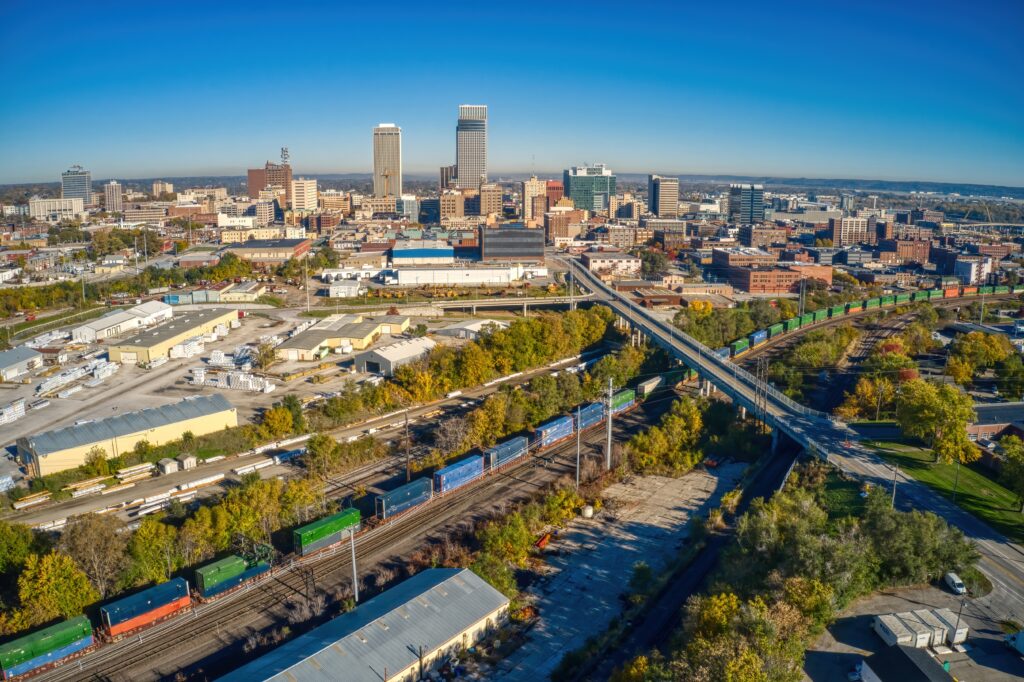
Douglas County, established in 1854, stands as the most populous county in Nebraska. It is home to Omaha, the state’s largest city and county seat. Named after Stephen A. Douglas, a U.S. Senator and political rival of Abraham Lincoln, Douglas County is a hub of cultural, economic, and social activity in Nebraska.
Omaha is known for its rich pioneer history, but it’s also a modern metropolitan area with a vibrant arts scene, diverse culinary landscape, and bustling business district. The city hosts the headquarters of several Fortune 500 companies, reflecting its significant role in the national economy.
The county is also home to notable attractions like the Henry Doorly Zoo and Aquarium, one of the biggest zoos in the United States, and the historic Old Market district, offering unique shopping, dining, and entertainment options.
Lancaster County
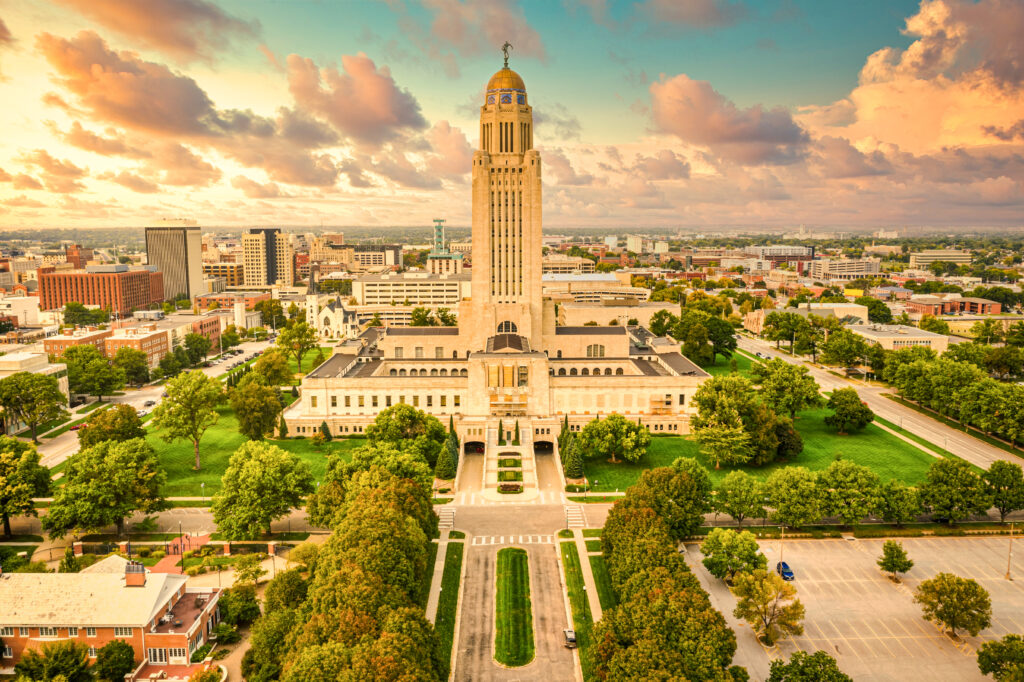
Lancaster County, named after Lancaster, Pennsylvania, was organized in 1854 and is now the second-most populous county in Nebraska. Its county seat, Lincoln, is not only the state capital but also a major cultural and educational center, home to the University of Nebraska-Lincoln.
The city of Lincoln is known for its vibrant arts scene, including the Lied Center for Performing Arts and the Sheldon Museum of Art. The city also boasts an array of parks and green spaces, like the Sunken Gardens, offering residents and visitors alike a blend of urban and natural environments.
In addition to its urban center, Lancaster County maintains a balance with its agricultural roots, seen in the surrounding farmlands and small communities. The county plays an essential role in Nebraska’s political, educational, and cultural life, hosting state government institutions like the Nebraska State Capitol.
Sarpy County
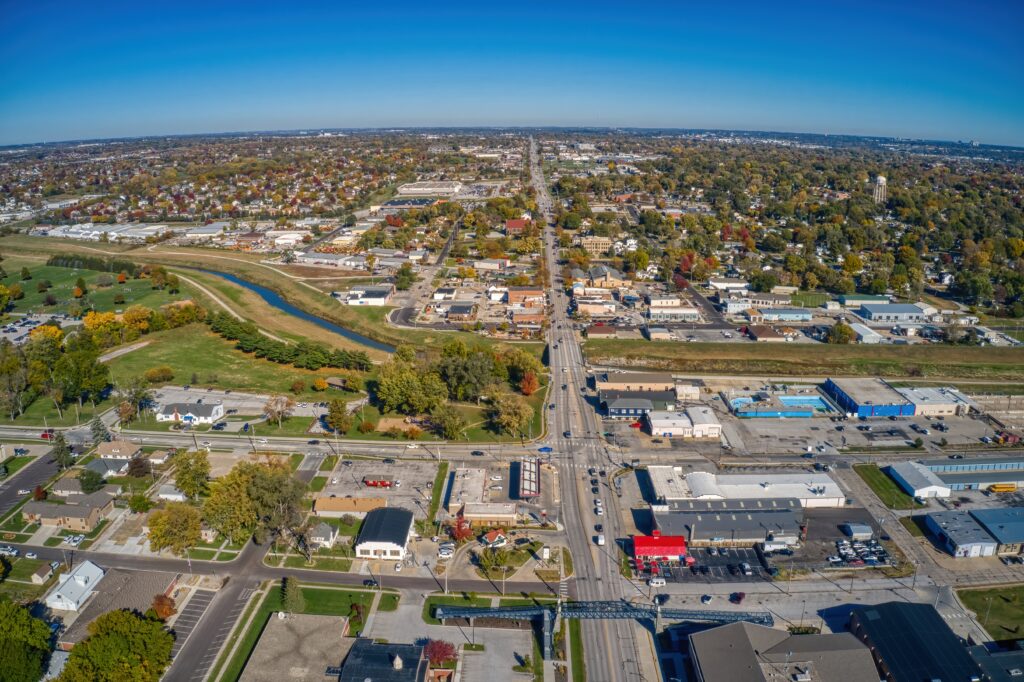
Sarpy County, situated just south of Omaha, was established in 1857 and named after Peter A. Sarpy, a prominent figure in the early history of Nebraska. The county seat is Papillion, which has been recognized as one of the best places to live in the United States due to its high quality of life, excellent schools, and strong community spirit.
As one of the fastest-growing counties in Nebraska, Sarpy County is known for its blend of suburban development and open spaces. It hosts Offutt Air Force Base, a major employer and key to the region’s economy and history. The base is home to the 55th Wing and the U.S. Strategic Command.
The county also offers a range of recreational activities, with attractions like Werner Park, home of the Omaha Storm Chasers minor league baseball team, and the Schramm Park State Recreation Area, offering hiking trails and an aquarium.
Hall County
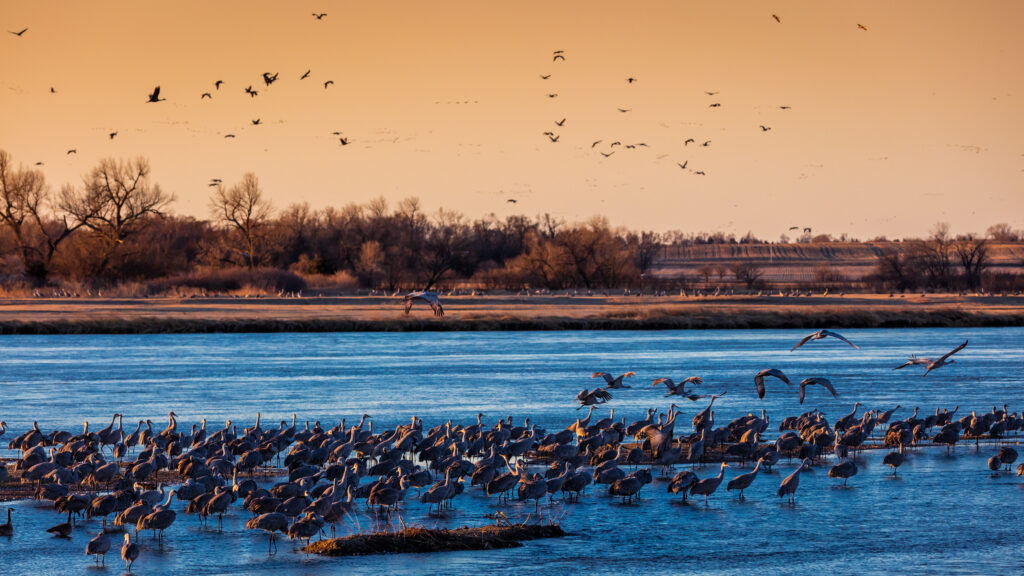
Hall County, established in 1858, is located in the central part of Nebraska. The county was named after Augustus Hall, an early judge in the territory. Its county seat, Grand Island, is the principal city and serves as a major economic and cultural hub in the region.
Grand Island is known for hosting the Nebraska State Fair, attracting visitors from all over the state with its exhibits, concerts, and agricultural competitions. The city also holds historical significance, being a key point on the Oregon Trail, with landmarks like the Stuhr Museum of the Prairie Pioneer preserving this heritage.
The county benefits from a diverse economy, with industries ranging from manufacturing to healthcare. Agriculture, however, remains a vital part of its economic foundation. Hall County is also notable for having the highest density of tornadoes of any county in Nebraska.
Buffalo County
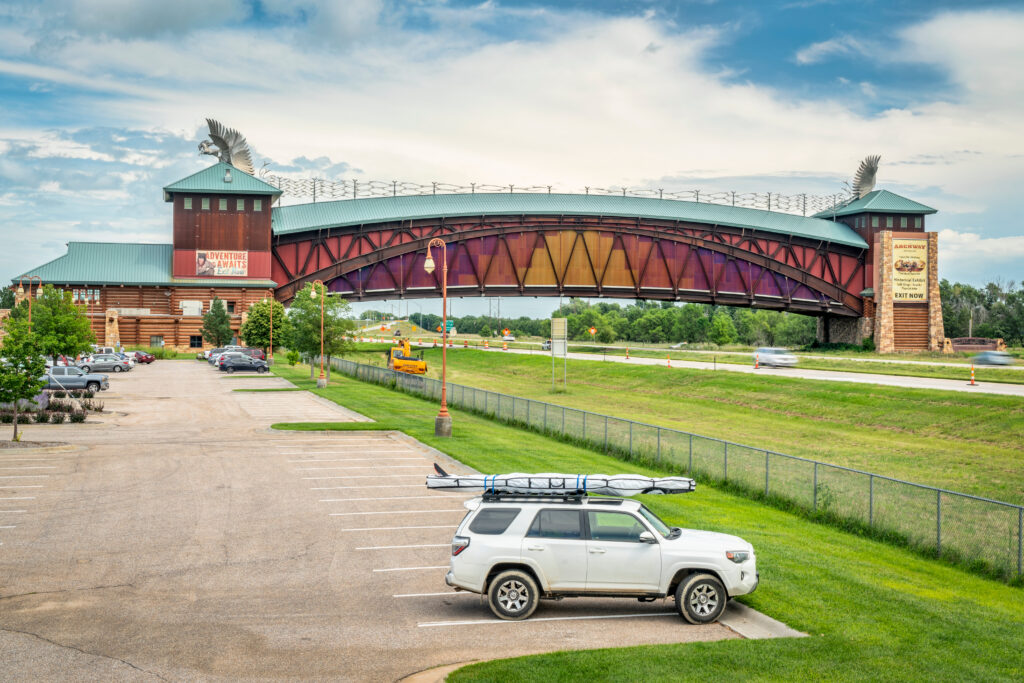
Buffalo County is also located in central Nebraska and was officially established in 1855. The county is named for the once-abundant buffalo herds that roamed the area. Kearney, the county seat, is not only a significant stop on the historic Oregon Trail but also a thriving modern city.
Kearney stands out for its commitment to preserving and celebrating its history, with attractions like the Great Platte River Road Archway Monument, which spans across Interstate 80 and offers an immersive journey through America’s westward expansion. The city also hosts the Museum of Nebraska Art, showcasing the state’s artistic heritage.
The University of Nebraska at Kearney (UNK) is another key institution in the county, adding to its vibrant cultural landscape and providing a boost to the local economy. Student enrollment at UNK just over 6,000 students, which come from 92 of Nebraska’s 93 counties.
Smallest Counties in Nebraska by Population
Blaine County
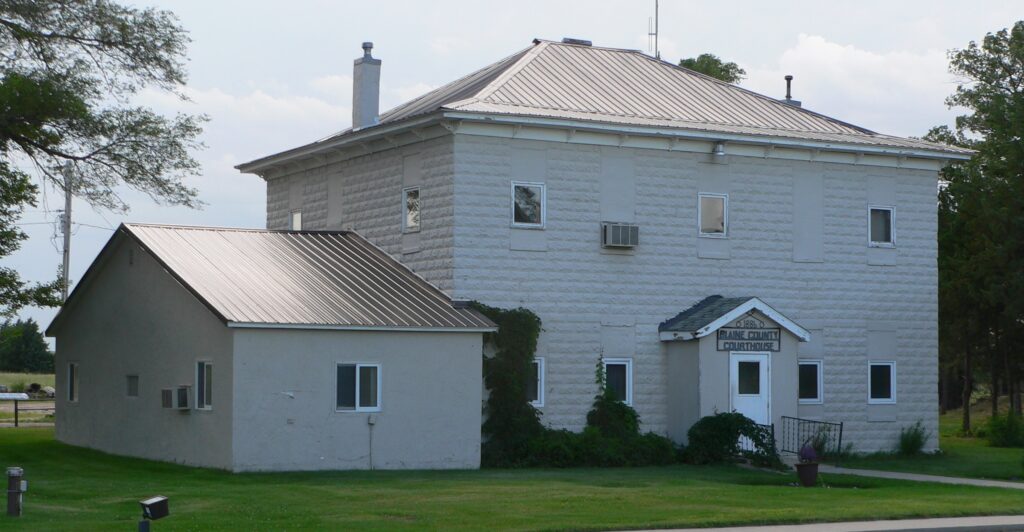
Blaine County, established in 1885, is the least populous county in Nebraska and among the least populous in the nation. Named after James G. Blaine, a former U.S. Secretary of State, it is located in the Sandhills region of the state. The county seat, Brewster, is a small town embodying the quiet, rural lifestyle of central Nebraska.
The county’s landscape is dominated by the rolling dunes of the Sandhills, an area known for its unique ecosystem and as a prime location for cattle ranching. Despite its small population, Blaine County maintains a strong sense of community and a deep connection to the land.
Outdoor activities like hunting and fishing are popular in the region, thanks to the abundant wildlife and natural beauty. The Dismal and Middle Loup Rivers run through Dunning, the most populous city in Blaine County with a population of about 80.
Arthur County
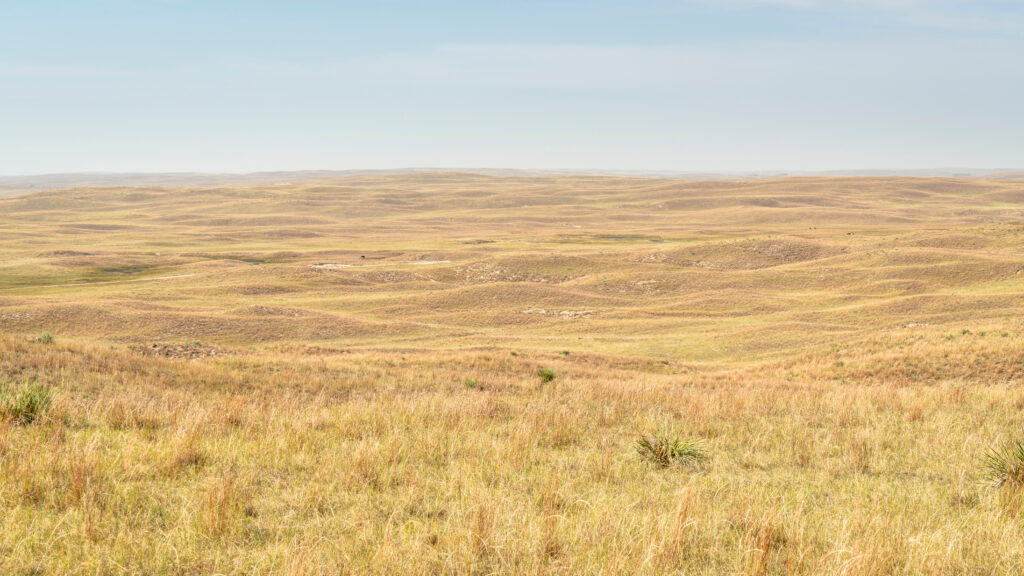
Arthur County, with its establishment in 1913, holds the distinction of being Nebraska’s second-least populous county. It was named in honor of President Chester A. Arthur. The county seat, Arthur, is not only the administrative center but also the heart of this tight-knit community.
Like Blaine County, it is located in the Sandhills region, and its economy is primarily based on ranching, with its vast, open grasslands ideal for cattle grazing. The county’s landscape is characterized by rolling hills and wide-open skies.
Despite its small size, Arthur County has a strong community spirit, with events and gatherings that bring residents together, reflecting the values of rural life in Nebraska. Arthur, Nebraska is also home to what has been considered the world’s smallest courthouse.
McPherson County
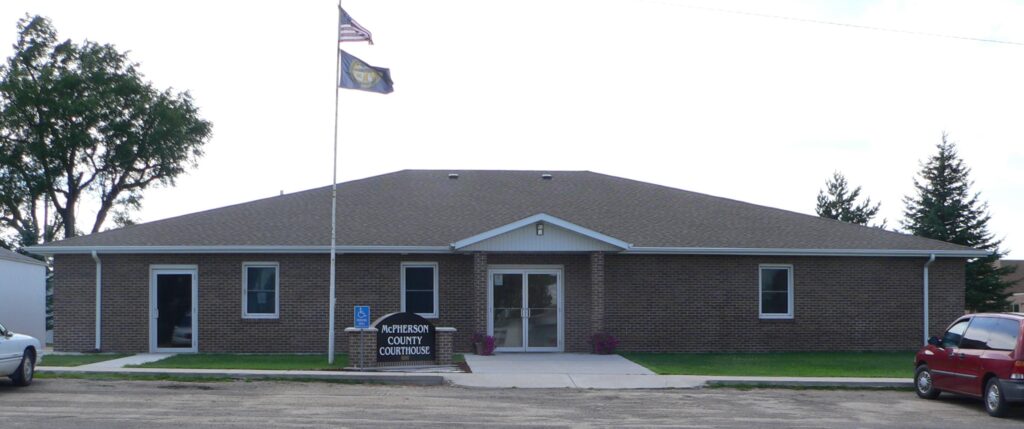
McPherson County, organized in 1890, is among the least populous counties in Nebraska. It is named after Civil War General James B. McPherson. The county seat, Tryon, is more of a village than a town, encapsulating the rural, close-knit community ethos of the area.
Situated in the Sandhills region, McPherson County’s landscape is marked by sprawling grasslands and sand dunes, providing a perfect backdrop for cattle ranching, the county’s primary economic activity. The natural beauty of the Sandhills, with their rolling hills and clear, open skies, dominates the county’s scenery.
The lifestyle in McPherson County is reflective of traditional rural Nebraska, with a strong sense of community and a slower pace of life. Annual events like the McPherson County Fair held in Tryon help to bring the community together.
Most Notable Counties in Nebraska
Scotts Bluff County
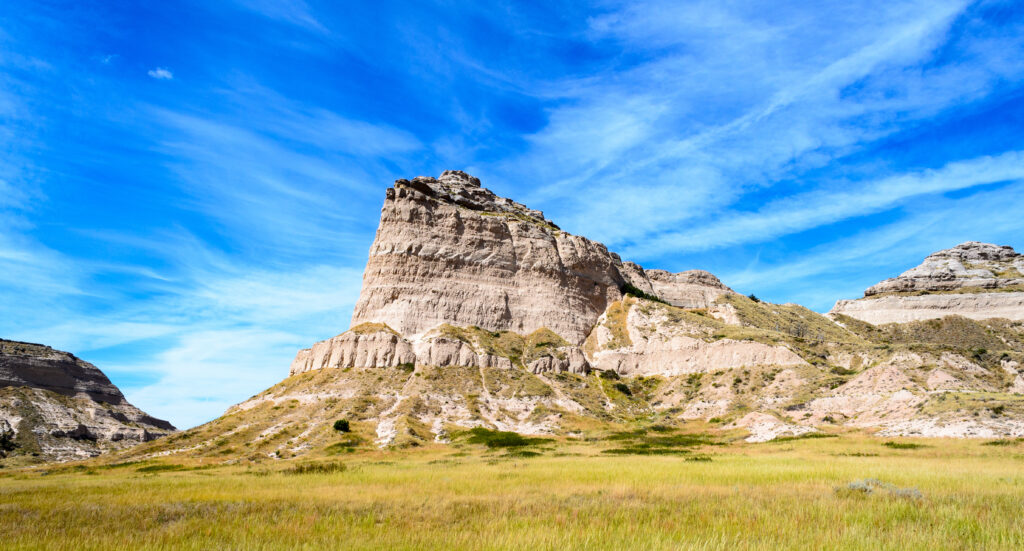
Scotts Bluff County, established in 1888, is located in the panhandle of western Nebraska. This county is named after a prominent bluff, Scotts Bluff National Monument, which is a significant natural landmark and a key historical site. The county seat, Gering, sits at the base of the bluff, providing a picturesque backdrop to this small, charming city.
The county is steeped in pioneer history, with Scotts Bluff National Monument having served as a major landmark on the Oregon, California, and Mormon Trails. Visitors to the monument can walk in the footsteps of early settlers and enjoy stunning views of the surrounding plains.
The city of Scottsbluff, the largest in the county, plays a crucial role in the region’s economy and serves as a commercial and healthcare hub for the panhandle. The region’s natural beauty also provides outdoor activities for visitors such as the Monument Valley Pathway, a hiking trail that can be accessed from the city of Scottsbluff.
Dawson County
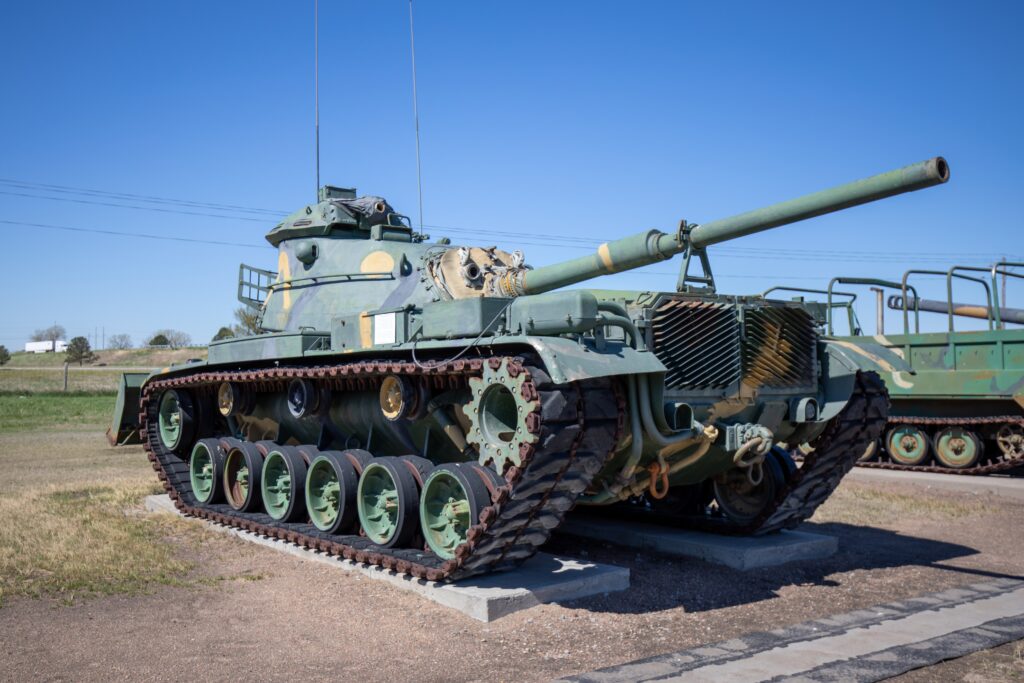
Dawson County, formed in 1871, is located in central Nebraska and is a vibrant testament to the state’s multicultural and agricultural heritage. The county seat, Lexington, is a hub of cultural diversity, with a significant proportion of its population having roots in various parts of the world, adding to the county’s rich cultural fabric.
Agriculture plays a pivotal role in Dawson County’s economy, with vast expanses of farmland dedicated to corn and cattle. The Platte River, which runs through the county, provides vital resources for irrigation and contributes to the lushness of the area.
The Heartland Museum of Military Vehicles in Lexington is a notable attraction, offering a glimpse into military history with its extensive collection. Additionally, the county’s location along the historic Lincoln Highway and its proximity to the Platte River make it a key area for both historical exploration and natural beauty.
Cherry County
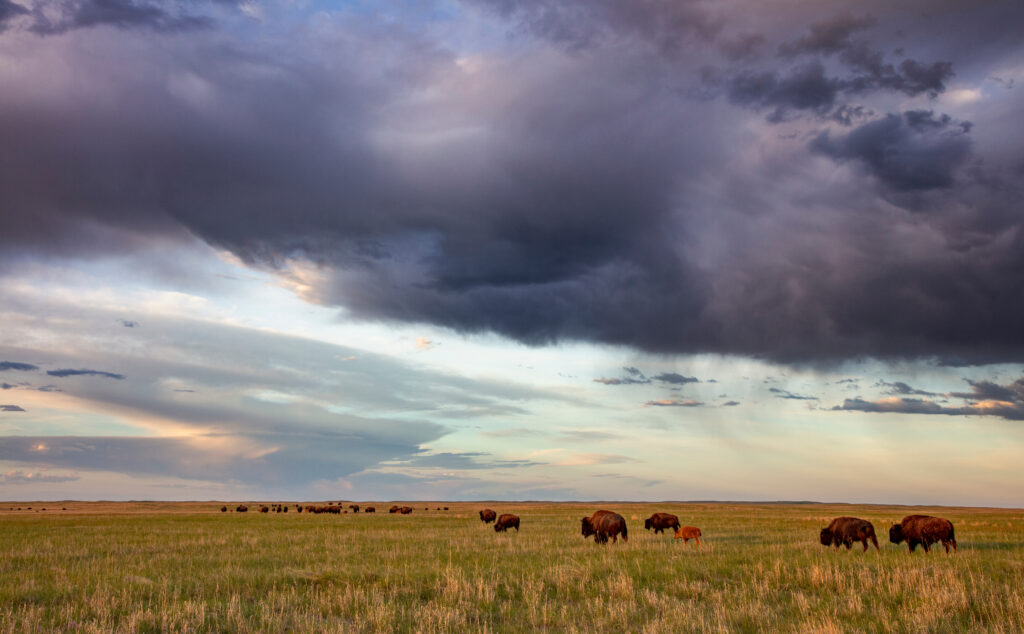
Cherry County, established in 1883, is the largest county in Nebraska by land area, located in the state’s Sandhills region. Its county seat, Valentine, is often associated with its scenic location near the Niobrara River, making it a popular destination for outdoor enthusiasts.
The county’s vast landscape is predominantly made up of ranchlands, underscoring its reputation as a heartland of Nebraska’s cattle ranching industry. This cowboy culture is a significant part of the county’s identity, with ranches dotting the picturesque, rolling sandhills.
Valentine, known for its charming small-town atmosphere, serves as a gateway to various natural attractions. These include the Niobrara National Scenic River, renowned for its beautiful waterfalls, canoeing, and kayaking, and the Valentine National Wildlife Refuge, offering unique wildlife viewing opportunities.
Madison County
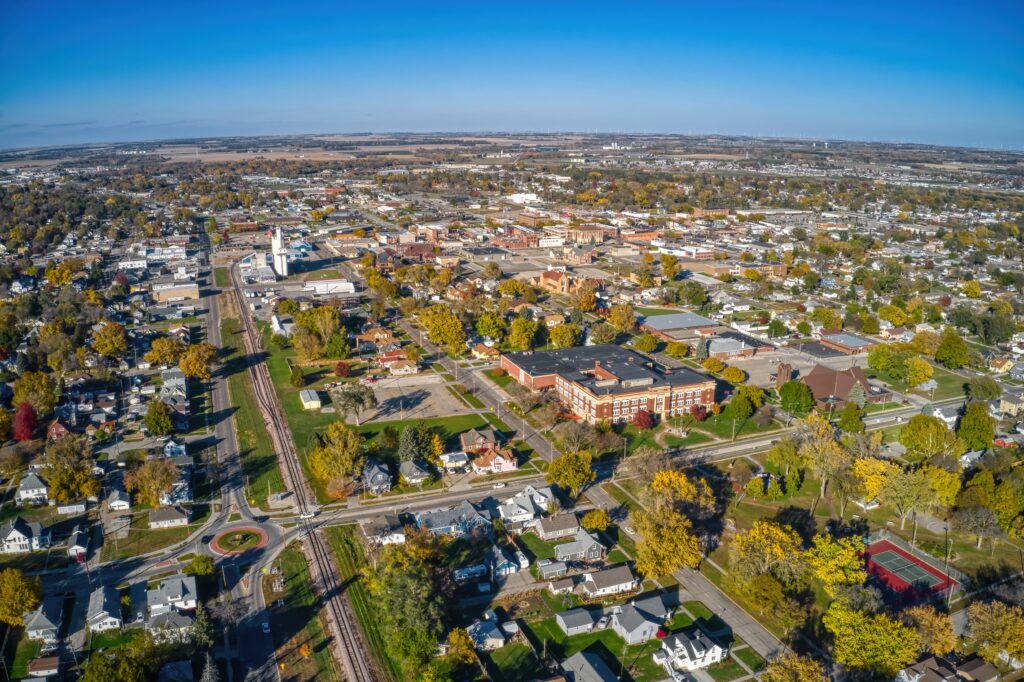
Madison County, located in northeastern Nebraska, was officially organized in 1856 and has since developed into a significant cultural and economic hub in the region. The county seat, Norfolk, is a dynamic city known for being the hometown of Johnny Carson, the iconic television host.
The presence of Northeast Community College in Norfolk adds a vibrant educational dimension to the county, fostering a lively student community and contributing to local cultural and economic activities. The city also serves as a regional center for healthcare, retail, and industry, supporting a diverse and robust economy.
Madison County is characterized by its blend of urban and agricultural landscapes, with farming remaining a key part of the local economy. The county’s rich history is showcased through various landmarks and museums, including the Elkhorn Valley Museum in Norfolk.
Gage County
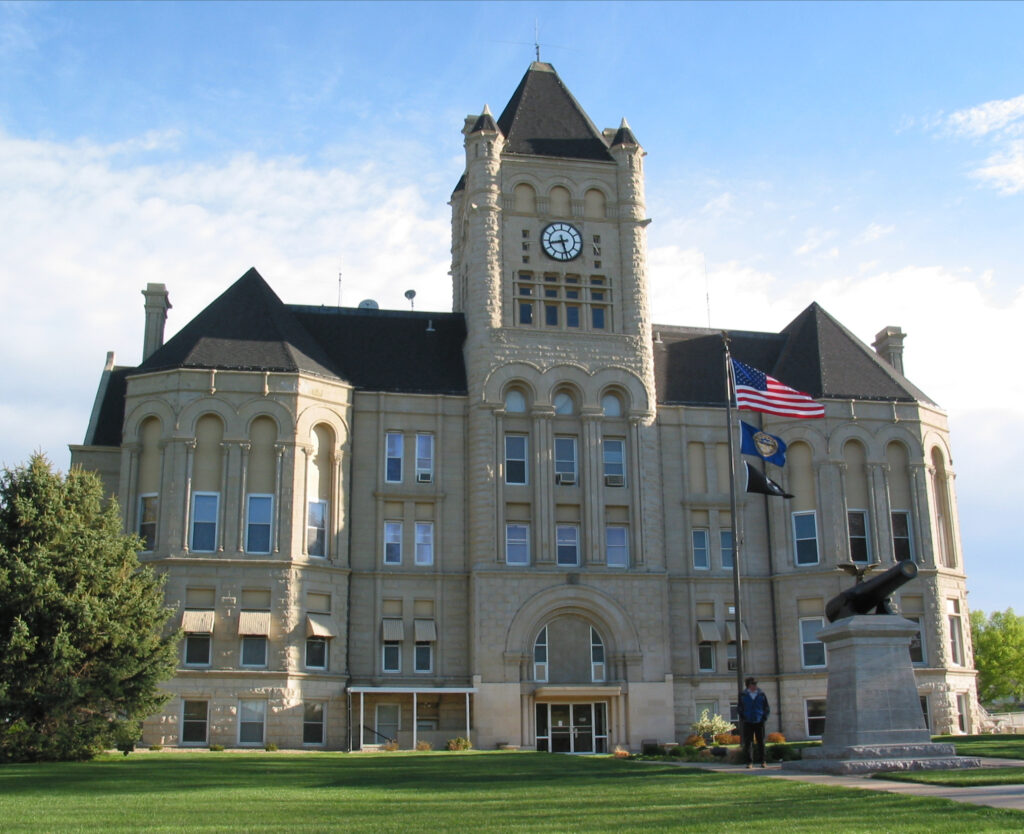
Gage County, originally established in 1855, is situated in southeastern Nebraska. It holds a special place in American history as the site of the Homestead National Monument of America, located near its county seat, Beatrice. This monument commemorates the Homestead Act of 1862, offering a deep dive into the era of westward expansion.
Beatrice, the largest city in Gage County, is a blend of historical charm and modern development. The city’s downtown area, with its historic buildings and local businesses, reflects the community’s pride in its heritage and commitment to growth.
Gage County’s landscape is a mix of rolling hills and fertile farmlands, emblematic of Nebraska’s agricultural heartland. The county’s connection to pioneer history is not just limited to the Homestead National Monument; it’s also seen in its small towns and rural areas, which maintain the spirit of the early settlers.
More About Nebraska Counties: FAQs
Which is the biggest county in Nebraska?
Cherry County is the largest county by land area in Nebraska, covering 6,009 sq mi (15,560 km2).
Which county in Nebraska is the oldest?
There are nine original counties of Nebraska, all tied as the oldest in the state: Burt, Cass, Dodge, Douglas, Nemaha, Otoe, Richardson, and Washington.
Which county in Nebraska has the lowest cost of living?
Generally, counties in rural areas, such as Hitchcock and Keya Paha, tend to have a lower cost of living compared to more urban counties.
Does Nebraska have any national parks?
Nebraska has one national park, the Homestead National Historical Park in Gage County, and several national monuments and historic trails.
Which county in Nebraska is the most expensive?
Douglas County, which includes Omaha, is typically considered one of the more expensive counties in Nebraska due to its urban real estate market and cost of living.
Image Sources and Copyright Information
- Aerial View of Downtown Omaha, Nebraska in Autumn: © Jacob Boomsma/Shutterstock
- Sunset Over the Nebraska State Capitol in Lincoln, Lancaster County: © Mihai_Andritoiu/Shutterstock
- Aerial View of a Suburban Area in Papillion, Nebraska: © Jacob Boomsma/Nebraska
- Sunset Gathering of Migratory Birds Over a Serene River: © Joseph Sohm/Shutterstock
- Architectural Pedestrian Bridge Over Highway with SUV Parked in Foreground: © marekuliasz/Shutterstock
- Blaine County Courthouse in Nebraska Viewed from the Southeast: The Blaine County Courthouse sits in grass in Brewster, Nebraska. | Public Domain Mark 1.0
- Expansive View of the Nebraska Sandhills at Midday: © marekuliasz/Shutterstock
- McPherson County Courthouse in Nebraska Viewed from the East: © Ammodramus/Wikimedia Commons | Public Domain Mark 1.0
- Majestic Scotts Bluff National Monument Under a Blue Sky: © Zack Frank/Shutterstock
- Vintage Military Tank on Display Under Clear Blue Sky: © RonaldL/Shutterstock
- Bison Herd Grazing at Sunrise on the Plains: © Danita Delimont/Shutterstock
- Aerial View of Downtown Norfolk, Nebraska in Autumn: © Jacob Boomsma/Shutterstock
- Gage County Courthouse with Clock Tower and American Flag: © Cheryl A. Meyer/Shutterstock